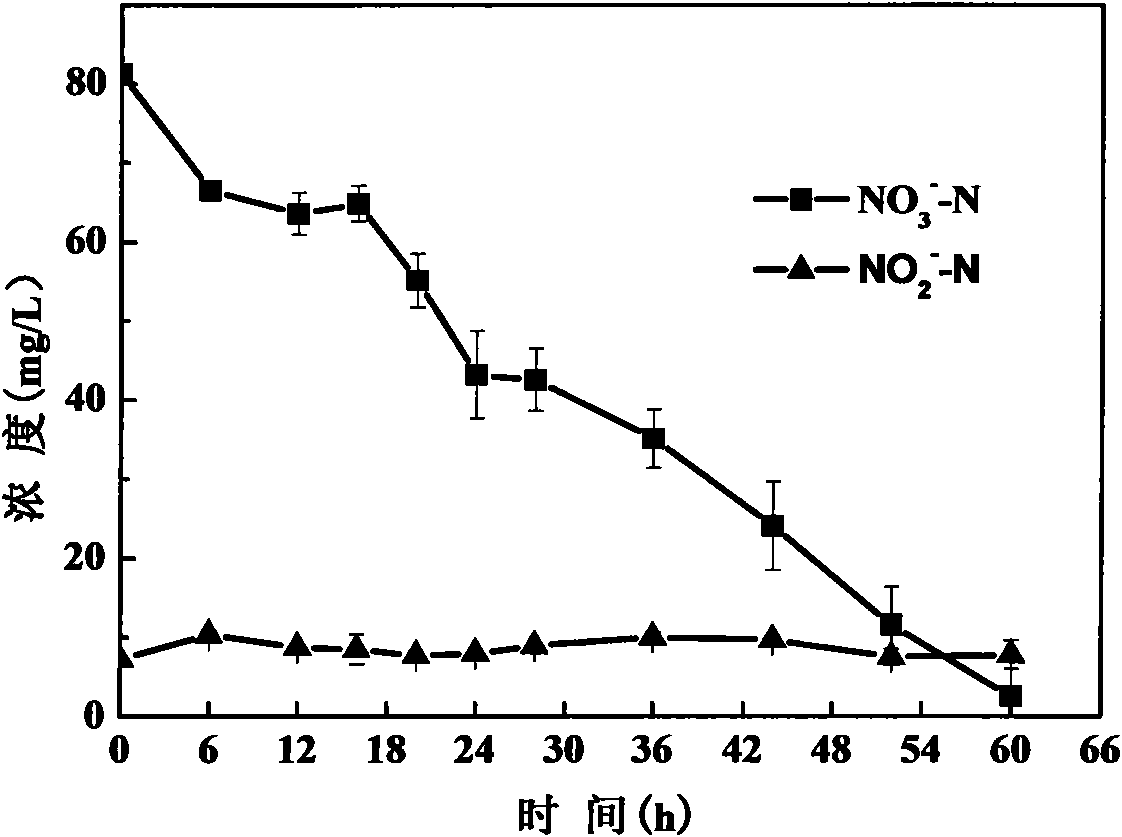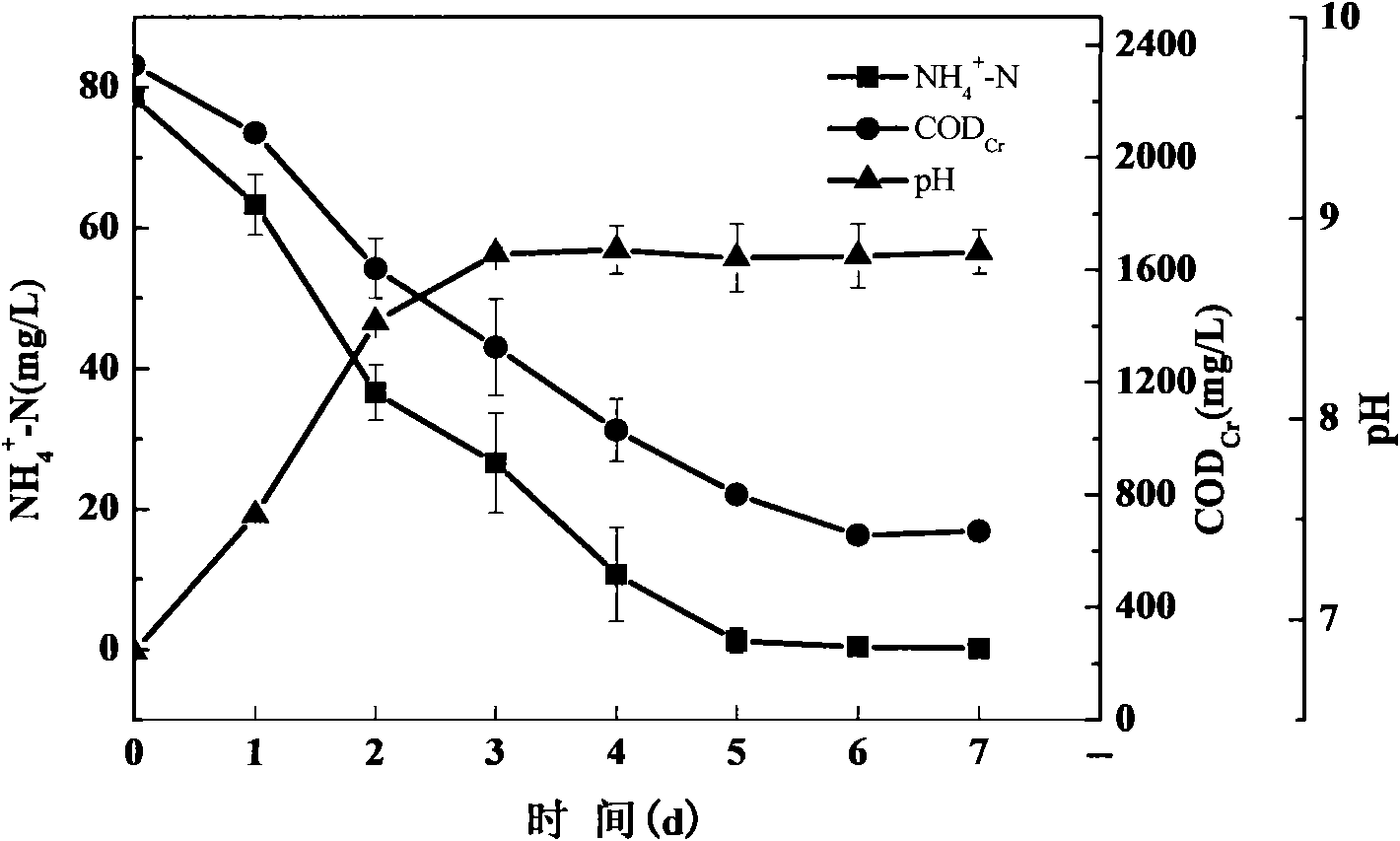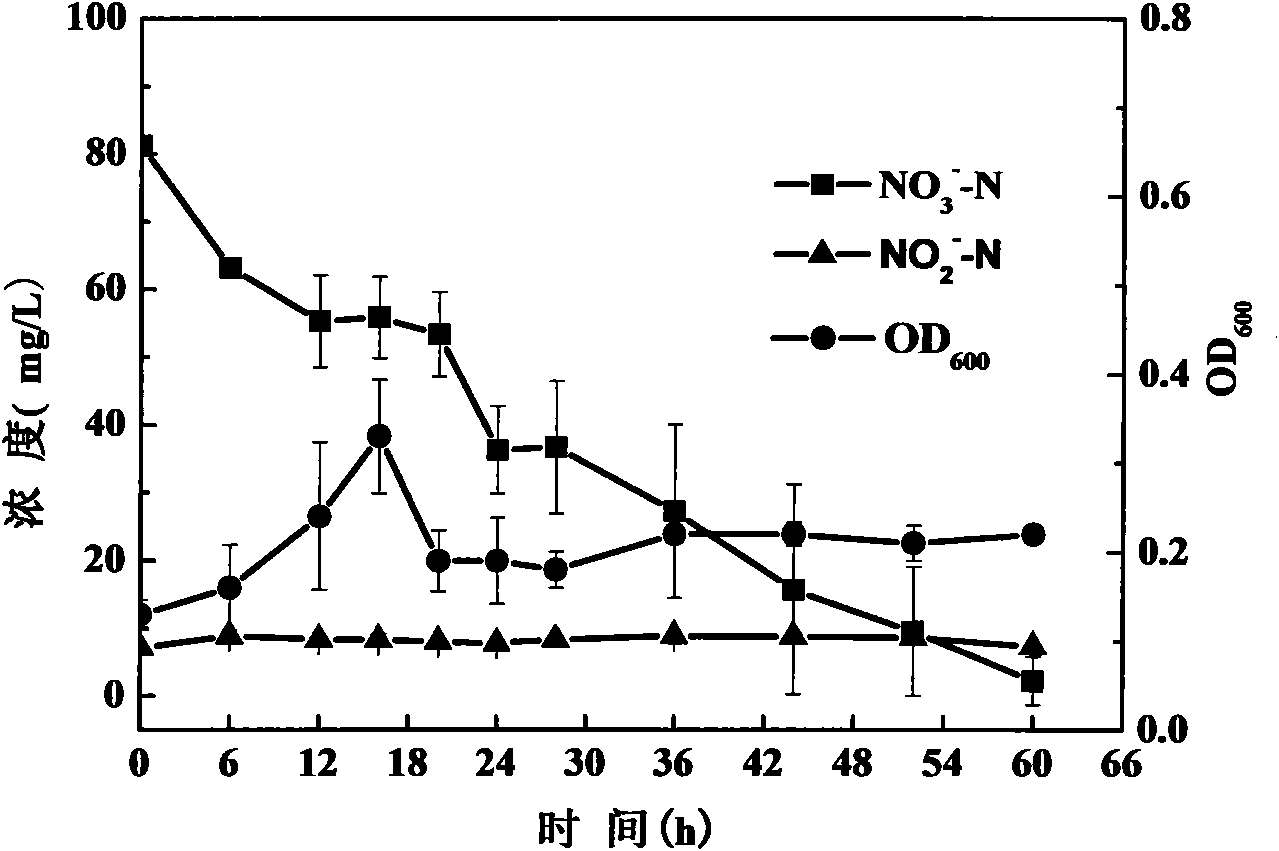Verdigris pseudomonas aeruginosa strain denitrified under different dissolved oxygen conditions and application thereof
A technology based on Pseudomonas aeruginosa and dissolved oxygen, applied in the field of biological denitrification, can solve problems such as low nitrification efficiency, increased power costs, and slow proliferation, and achieve high application value, cost savings, and simplified process flow
- Summary
- Abstract
- Description
- Claims
- Application Information
AI Technical Summary
Problems solved by technology
Method used
Image
Examples
Embodiment 1
[0065] Example 1. Identification of strain HD4-2
[0066] 1. Individual morphological characteristics of the strain: negative Gram stain; rod-shaped; no spores and capsules.
[0067] 2. Bacterial colony morphological characteristics: bacterial strain is on plate (every L culture medium contains 5g sodium succinate, 0.543g K 2 HPO 4 ·3H 2 O, 0.5gNaNO 3 , 0.1g KCl, 0.1g MgSO 4 ·7H 2 O, 0.0005g FeSO 4 ·7H 2 (0, pH is 7.0, add 1.5%-2.0% agar) after cultivating on 2 days, form the circular colony of 2-3mm, white, flat, smooth surface, produce yellow-green pigment.
[0068] 3. Characteristics of 16S rRNA gene sequence: its 16S rRNA has the nucleotide sequence shown in the sequence table, and the sequence length is 1055bp.
[0069] According to its morphological characteristics and 16S rRNA gene sequence characteristics, strain HD4-2 was identified as Pseudomonas aeruginosa.
Embodiment 2
[0070] Example 2. Biological denitrification experiment under anaerobic conditions
[0071] Anaerobic conditions refer to filling 100mL of culture medium in a 100mL anaerobic bottle, closing the lid, and then sterilizing at 121°C for 30 minutes; after inoculating the bacterial suspension under sterile conditions, seal the anaerobic bottle; first use a vacuum pump to evacuate , and then filled with nitrogen, repeating this operation 3 times to ensure that anaerobic conditions are achieved; finally, place the anaerobic bottle at 30° C., shake the culture in a shaker at 50 rpm (so that the bacteria and the culture solution are fully mixed).
[0072] The strain HD4-2 was inoculated in a 250mL Erlenmeyer flask containing 100mL medium (each L medium contained 5g sodium succinate, 0.543g K 2 HPO 4 ·3H 2 O, 0.5g NaNO 3 , 0.1g KCl, 0.1g MgSO 4 ·7H 2 O, 0.0005g FeSO 4 ·7H 2 O, pH is 7.0), 30 ℃, 150rpm shaker shake culture 20-24h. When OD 600 When it is 0.9-1, the culture is sto...
Embodiment 3
[0076] Example 3. Biological denitrification experiment under anoxic conditions
[0077] The anoxic condition refers to the situation in which the culture medium of the inoculated bacterial suspension is statically placed in a biochemical incubator.
[0078] Please note: hypoxic conditions and the following microaerobic conditions and aerobic conditions are common knowledge known to those skilled in the art, so they will not be described in detail here.
[0079] 1. Biological denitrification experiment using ammonia nitrogen as nitrogen source
[0080] Bacterial strain HD4-2 was inoculated in 500mL Erlenmeyer flask containing 300mL medium (every L medium contains 5g sodium succinate, 0.543g K 2 HPO 4 ·3H 2 O, 0.3147g NH 4 Cl, 0.1g KCl, 0.1g MgSO 4 ·7H 2 O, 0.0005g FeSO 4 ·7H 2 O, pH is 7.0), 30 ℃, 150rpm shaker shake culture 20-24h. When OD 600 When it is 0.9-1, the culture is stopped, and the bacterial suspension is used for inoculation.
[0081] Get 10mL prepared ...
PUM
| Property | Measurement | Unit |
|---|---|---|
| oxygen equivalent | aaaaa | aaaaa |
Abstract
Description
Claims
Application Information
 Login to View More
Login to View More - R&D
- Intellectual Property
- Life Sciences
- Materials
- Tech Scout
- Unparalleled Data Quality
- Higher Quality Content
- 60% Fewer Hallucinations
Browse by: Latest US Patents, China's latest patents, Technical Efficacy Thesaurus, Application Domain, Technology Topic, Popular Technical Reports.
© 2025 PatSnap. All rights reserved.Legal|Privacy policy|Modern Slavery Act Transparency Statement|Sitemap|About US| Contact US: help@patsnap.com



